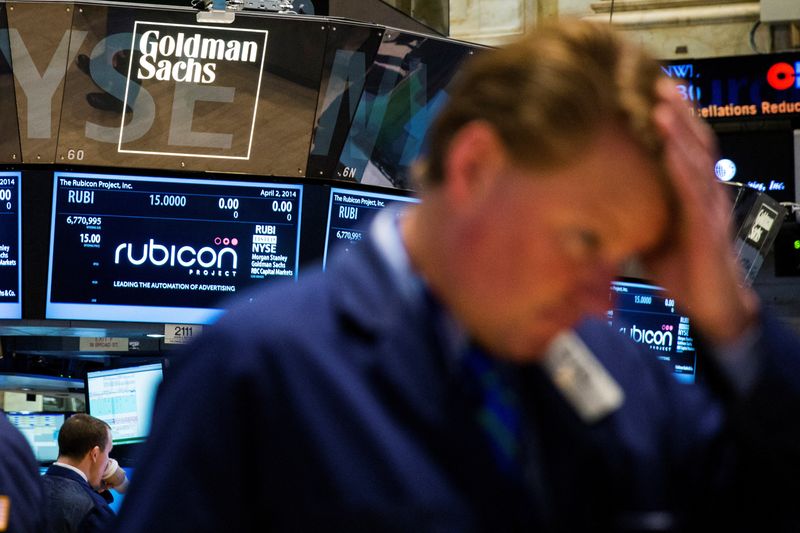Goldman Sachs Expects M&A Market Recovery in 2023
2023.01.04 11:25

Goldman Sachs Expects M&A Market Recovery in 2023
Budrigannews.com – The Goldman Sachs Group Inc. despite a slowdown in economic growth and a weak credit market, the world’s top dealmakers are optimistic about a recovery in global mergers and acquisitions (M&A) in the second half of 2023.
Executives at the Wall Street powerhouse, including Dan Dees and Jim Esposito, who jointly run its global banking and markets division, stated that they are primed for a recovery when financing markets ease up, possibly as early as the second half of 2023. This is because economic forecasts are becoming more gloomy.
Global mergers and acquisitions values fell 36% to $3.78 trillion in 2022 from a record $5.91 trillion in 2021, according to data from Dealogic. As activity declines, banks, including Goldman Sachs, have cut jobs.
In a series of interviews with Reuters over the past few weeks, senior Goldman dealmakers who have each worked there for more than two decades stated that there are numerous factors contributing to an increase in global deal activity.
According to the bankers, big investors are sitting on a lot of cash and are getting ready to fund transactions, and big companies that are making a lot of money want to diversify their businesses, but they are waiting for the economic uncertainty to go away.
Global co-head of M&A Stephan Feldgoise stated, “I remain quite bullish, maybe not on the first quarter, but certainly as we go forward.” He added, however, that there are “clear headwinds in the first part” of 2023.
Mark Sorrell, Feldgoise’s London counterpart, observes corporate clients jumping on deals when financing is available because their underlying goals, such as acquiring new customers, developing new products, or expanding into new areas, remain unchanged.
As interest rates rise, creditors have stopped making riskier loans for buyouts, which is why businesses are not participating, but he said that could change quickly.
Sorrell stated, “We don’t know when the financing market will come back, but it will happen because of the amount of liquidity in the system, we think transaction volumes will recover and activity will recover.”
He stated that the resurgence may occur “quicker than people anticipate.” TOP DEALERS If markets recover, investment bankers at Goldman Sachs stand to benefit. For the past 20 years, the company has been the top global M&A advisor by revenue, followed by JPMorgan Chase & Co. (NYSE:), based on data from Dealogic.
Regardless of that position, Goldman isn’t invulnerable to a log jam. In the third quarter, its investment-banking division contributed just 13% of the company’s revenue, down from 27% in the previous year and 23% in the third quarter of 2018, when CEO David Solomon took over.
According to a previous report from Reuters, the bank is preparing to eliminate thousands of employees in the new year, intensifying a previous round of approximately 500 layoffs that took place in September. Also, bonuses will be cut in half.
According to Goldman’s management, staffing levels are being adjusted in accordance with the current economic climate, and in some instances, employees are being relocated to more active areas.
According to Russ Hutchinson, the bank’s chief operating officer of global M&A, the bank sees opportunities in advising clients who are being targeted by activist investors or fintech companies that are open to suitors after their valuations have dropped. The fortunes of Wall Street’s dealmakers are heavily dependent on whether the leveraged loan market will reactivate after a lull that occurred last year. The leveraged buyout (LBO) market was frozen as a result of falling corporate valuations and a recession brought on by a collapse in the housing market, according to some observers.
According to Esposito, Goldman’s co-head of global banking and markets, the credit market’s current stress is very different from 2008’s. At its height during the crisis, the banking sector had stalled LBO exposure of more than $700 billion, which took 12 to 18 months to clear.
Today, “there’s presumably somewhere in the range of $100 and $125 billion … It’s a practically irrelevant number contrasted with 2008, and similarly significantly, the credit markets are such a ton more profound.”
Lenders are burdened with tens of billions of dollars of so-called “hung debt” that they are unable to sell on to investors as a result of the market stress.
Goldman veterans, on the other hand, remain optimistic in spite of the market turmoil.
Dees stated, “You know that when you go through periods of volatility, it creates opportunity.”
More Stocks rise ahead of Fed meeting








